Dian Fossey was an American primatologist who is famously known for her gorilla conservation work in the Volcanoes national park of Rwanda. Fossey along with Jane Goodall and Mary Galdikas were one of the students of Dr Richard Leakey, a renowned paleo-anthropologist who was known for sending other 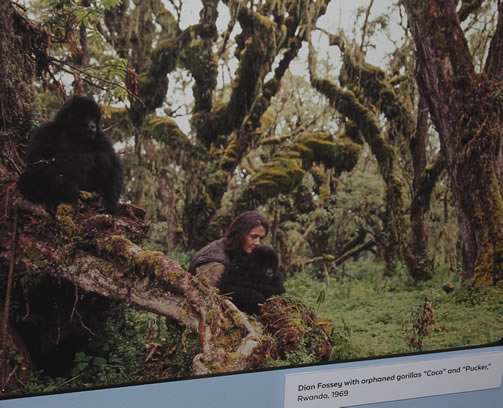 passionate researchers into the wilds of Africa. Whereas Fossey studied mountain gorillas, Jane Goodall (Third image) focused on the chimpanzees in Tanzania while Mary Galdikas (Second Image) studied Orangutans.
passionate researchers into the wilds of Africa. Whereas Fossey studied mountain gorillas, Jane Goodall (Third image) focused on the chimpanzees in Tanzania while Mary Galdikas (Second Image) studied Orangutans.
Fossey was inspired by travelers returning from Africa and in 1966 decided to go on tour of parts of the continent. She was greatly impressed with the natural beauty and wildlife she encountered. Later, Fossey picked interest in studying the history of mankind and especially evolution. Dr Richard Leakey encouraged her to study mountain gorillas. She came to Africa a second time and first settled in Virunga National Park of Congo before her final destination in the Volcanoes National Park. Dian Fossey set up the Karisoke Research Center between Mount Karisimbi and Bisoke.
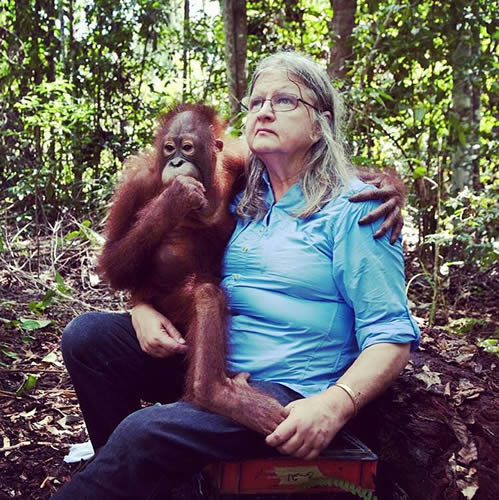 As she embarked on her research work, her initial interest turned into a deep love for mountain gorillas and their overall well-being. She started studying into their biological composition and social behavior. Fossey would get close to a particular gorilla group and attempt to speak to them in their own language. Eventually the mountain gorillas started trusting her and would allow her in their presence. One of the gorillas named Digit had a strong bond with Dian Fossey. When Digit was later killed by poachers, Fossey was deeply saddened. This forced her to focus not only on research but also on gorilla conservation and the elimination of poaching.
As she embarked on her research work, her initial interest turned into a deep love for mountain gorillas and their overall well-being. She started studying into their biological composition and social behavior. Fossey would get close to a particular gorilla group and attempt to speak to them in their own language. Eventually the mountain gorillas started trusting her and would allow her in their presence. One of the gorillas named Digit had a strong bond with Dian Fossey. When Digit was later killed by poachers, Fossey was deeply saddened. This forced her to focus not only on research but also on gorilla conservation and the elimination of poaching.
Dian Fossey was vehemently against 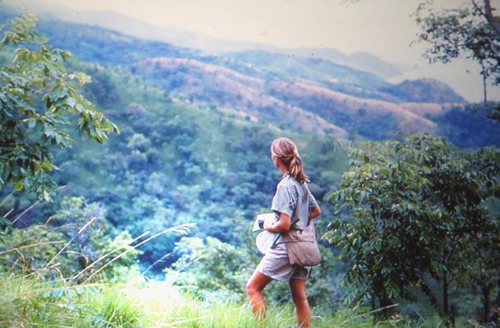 poaching and gorilla tourism. She claimed that the two activities were a threat to the survival of mountain gorillas because they thrived when left alone. When the Volcanoes National Park was formed in 1920, a law was set making poaching and hunting illegal in the area. However, the enforcement of this law was weak and it didn’t stop poachers from hunting gorillas or capturing them for sale as pets. By the time Dian Fossey arrived in the park, poaching was on the high and the overall population of mountain gorillas was at an all-time low.
poaching and gorilla tourism. She claimed that the two activities were a threat to the survival of mountain gorillas because they thrived when left alone. When the Volcanoes National Park was formed in 1920, a law was set making poaching and hunting illegal in the area. However, the enforcement of this law was weak and it didn’t stop poachers from hunting gorillas or capturing them for sale as pets. By the time Dian Fossey arrived in the park, poaching was on the high and the overall population of mountain gorillas was at an all-time low.
Fossey Channeled all her energies and resources to fight poaching and animal trafficking in the area. She sent out her staff to spy on known poachers. She would then report the poachers to the authorities and 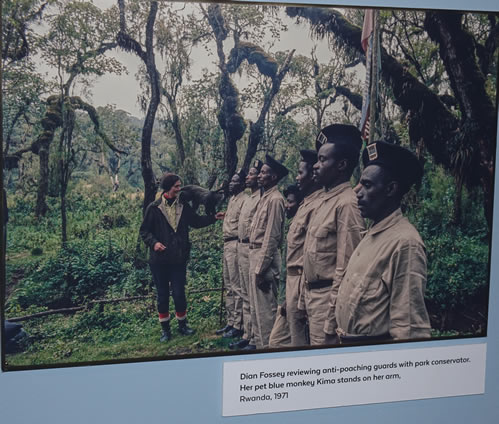 or fight them physically. When reporting and fighting the poaches proved ineffective, Fossey set up the Digit Fund. Through the Digit Fund, she was able to finance patrols and demolish snares that were set up in the park by poachers. She also let the world know about mountain gorillas and how poaching was threatening their very existence. Her writings, presentations and overall efforts attracted a lot of attention worldwide hence enabling her to raise more resources to fight poaching.
or fight them physically. When reporting and fighting the poaches proved ineffective, Fossey set up the Digit Fund. Through the Digit Fund, she was able to finance patrols and demolish snares that were set up in the park by poachers. She also let the world know about mountain gorillas and how poaching was threatening their very existence. Her writings, presentations and overall efforts attracted a lot of attention worldwide hence enabling her to raise more resources to fight poaching.
Unfortunately, as she worked tirelessly to protect the mountain gorillas, she made lots of enemies – particularly among those benefited from pet trade. In 1985, Fossey was found murdered in her cabin bringing an end to her 20-year old conservation work. The assailants who stormed her room have never been known or arrested. 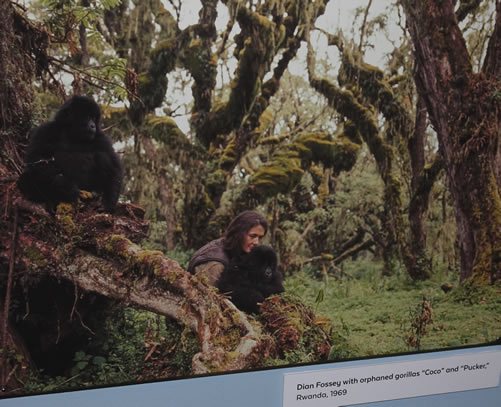 She was buried in a tomb next to her favorite gorilla Digit.
She was buried in a tomb next to her favorite gorilla Digit.
Though she is no more, Fossey’s work and legacy remains intact. Several conservation bodies were created including the Dian Fossey Fund International that has continued to support gorilla conservation works in the volcanoes and other nearby national parks. The gorilla tourism that she frowned upon is what is helping the giant primates survive in the current era. Without gorilla trekking, there would be no resources to protect the primates. Governments and local communities would see no value in keeping the primates alive.
Dian Fossey Grave/Tomb
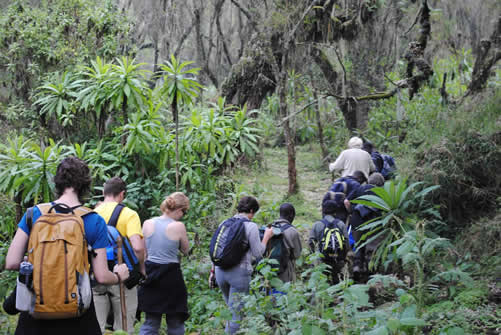 For some, gorilla trekking in the Volcanoes National Park is incomplete without visiting the grave of Dian Fossey and her former Karisoke Research Center. Hiking to the Dian Fossey grave can be arranged before or after gorilla trekking. The Dian Fossey tomb hike rewards visitors with amazing views of the Volcanoes National Park and the wider Virunga ranges of mountains extending all the way to the Democratic Republic of Congo. Dian Fossey was the first to study mountain gorillas extensively. Gorillas are naturally wild and will avoid humans whenever they can. If one gets too close, they could charge. Fossey discovered ways to habituate mountain gorillas by first winning the trust of the dominant silverback.
For some, gorilla trekking in the Volcanoes National Park is incomplete without visiting the grave of Dian Fossey and her former Karisoke Research Center. Hiking to the Dian Fossey grave can be arranged before or after gorilla trekking. The Dian Fossey tomb hike rewards visitors with amazing views of the Volcanoes National Park and the wider Virunga ranges of mountains extending all the way to the Democratic Republic of Congo. Dian Fossey was the first to study mountain gorillas extensively. Gorillas are naturally wild and will avoid humans whenever they can. If one gets too close, they could charge. Fossey discovered ways to habituate mountain gorillas by first winning the trust of the dominant silverback.
During the hike, tourists get to know a lot about gorilla conservation and the work of Fossey. The Park Rangers will take you through the life of the great primatologists, her dedication and efforts to fight 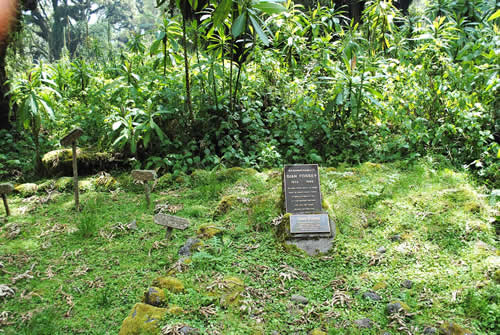 poaching. Fossey left the comfort of life back to live in a remote and forested land up the mountains of Rwanda. It is said that without her early work of conservation, mountain gorillas would probably be extinct by now. Her story is very inspiring and visiting her tomb is a great way of paying homage. Her former Karisoke Research Center can still be seen but is now dilapidated. The Dian Fossey Tomb hike is not only about the primatologists. Participants have an opportunity to encounter some of the park creatures like golden monkeys, giant forest hogs, elephants, antelopes, buffaloes and birds. If you are lucky, you might even encounter a gorilla group along the way. If this occurs, you will be allowed to stop for a while and watch them but not take photographs.
poaching. Fossey left the comfort of life back to live in a remote and forested land up the mountains of Rwanda. It is said that without her early work of conservation, mountain gorillas would probably be extinct by now. Her story is very inspiring and visiting her tomb is a great way of paying homage. Her former Karisoke Research Center can still be seen but is now dilapidated. The Dian Fossey Tomb hike is not only about the primatologists. Participants have an opportunity to encounter some of the park creatures like golden monkeys, giant forest hogs, elephants, antelopes, buffaloes and birds. If you are lucky, you might even encounter a gorilla group along the way. If this occurs, you will be allowed to stop for a while and watch them but not take photographs.
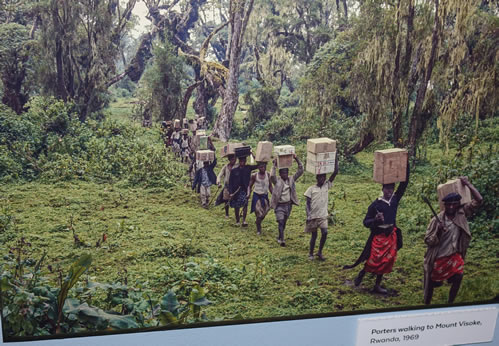 The visit to the Dian Fossey tomb starts in the morning when everyone is at full strength. All participants get to the park offices for a comprehensive briefing about the activity. At the end of the briefing, the park Rangers proceed to the starting point which is at the foot of Mount Bisoke. At this point, you will find porters waiting to offer help in case you have heavy cameras or bags. It is recommended that you use their services considering the length of the hike. Heavy luggage can tire you out easily and stop you from enjoying the hike. The services of a porter costs about 15 US Dollars. Do not forget to take one of the free walking sticks to help you navigate through the steep slopes.
The visit to the Dian Fossey tomb starts in the morning when everyone is at full strength. All participants get to the park offices for a comprehensive briefing about the activity. At the end of the briefing, the park Rangers proceed to the starting point which is at the foot of Mount Bisoke. At this point, you will find porters waiting to offer help in case you have heavy cameras or bags. It is recommended that you use their services considering the length of the hike. Heavy luggage can tire you out easily and stop you from enjoying the hike. The services of a porter costs about 15 US Dollars. Do not forget to take one of the free walking sticks to help you navigate through the steep slopes.
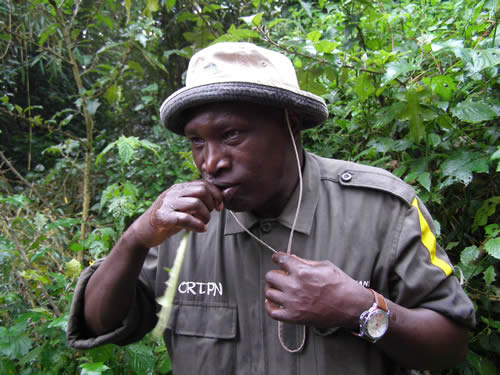 After hiking for a while along the slopes of Mount Bisoke, you will find the ruins of the former Karisoke research center close to the tomb of Dian Fossey. Fossey is buried next to her favorite gorilla Digit. The park Ranger will give a commentary about the site and its rich history. We hope you can get the famous Ranger known as Francois to accompany you. Francois worked with Fossey and now helps tourists explore the park. After paying homage to Fossey and exploring the former Karisoke Research Center, you will be led back to the starting point.
After hiking for a while along the slopes of Mount Bisoke, you will find the ruins of the former Karisoke research center close to the tomb of Dian Fossey. Fossey is buried next to her favorite gorilla Digit. The park Ranger will give a commentary about the site and its rich history. We hope you can get the famous Ranger known as Francois to accompany you. Francois worked with Fossey and now helps tourists explore the park. After paying homage to Fossey and exploring the former Karisoke Research Center, you will be led back to the starting point.
In order to complete this activity, one needs to be reasonably fit because the Dian Fossey Tomb is some distance away from the park offices. The area is mountainous and can get muddy resulting in a challenging hike especially for the first time hiker.
Although the Dian Fossey grave hike can be booked on the day of the hike, it is recommended that traveler so it at least 3 months in advance especially if they are planning to travel during the peak season (June, July, August, September, December and January). You might want to read more from the 3 days Gorilla Trekking and Dian Fossey tour package.
Dian Fossey Tomb Hike – Additional Facts and Things to consider
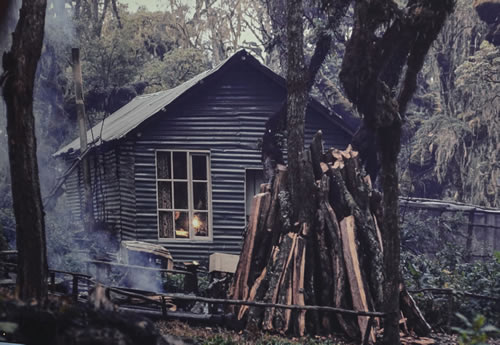 Dian Hike permits: The permit goes for $75. Any traveler must acquire this pass to visit the tombs of Dian Fossey. The permit can be bought at the park offices, from the Rwanda Development Board offices in Kigali or through their official website. Most travelers book the permit and tour with the help of a tour operator.
Dian Hike permits: The permit goes for $75. Any traveler must acquire this pass to visit the tombs of Dian Fossey. The permit can be bought at the park offices, from the Rwanda Development Board offices in Kigali or through their official website. Most travelers book the permit and tour with the help of a tour operator.
Accommodation: Since the hike takes half of the day, you may need accommodation within the park before or after the hike. You can find many lodges/hotels offering budget, mid-range and luxury facilities online or through your tour operator.
Transport: You will need a car to take you to the Volcanoes National Park. The Volcanoes national park is 3 hours’ drive away from Kigali, the capital of Rwanda. Most travelers use the services of a tour operator to take them to the park.
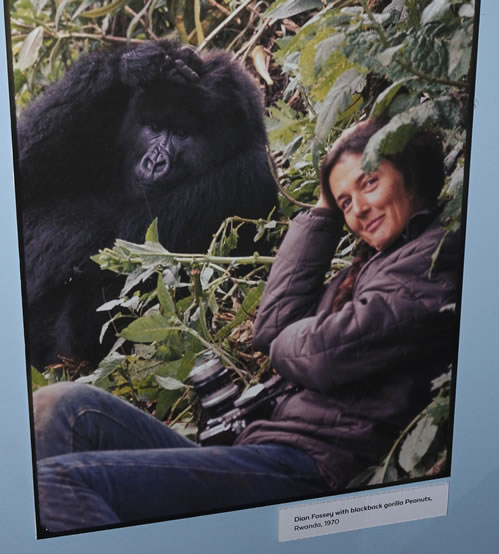 Travel documents: While attending the briefing session, your passport and permit will be requested. Do not forget to move with your passport or else you might not take part in the activity.
Travel documents: While attending the briefing session, your passport and permit will be requested. Do not forget to move with your passport or else you might not take part in the activity.
Hiking Boots: A long trek on a steep and inclined landscape requires specific shoes. Travelers are advised to wear shoes with great studs. They must also be waterproof to deal with the mud or rains.
Clothing: It is important to pack clothes which are suitable for trekking/hiking. These clothes are normally made of polyester material, water proof and sweat resistant. The clothes should also cover your body well so that you are protected from thorns and insect bites.
Snacks and drinks: A hike to the Dian Fossey grave can be a long and strenuous activity. You may get dehydrated or get hungry as you climb up the mountain. Snacks, water and energy drinks will help you feel more comfortable.


